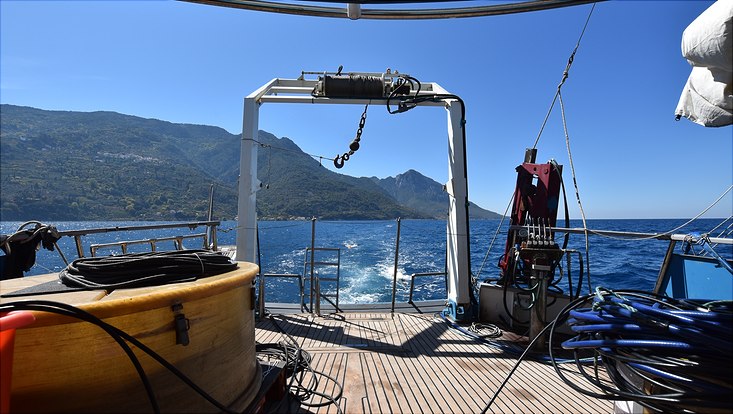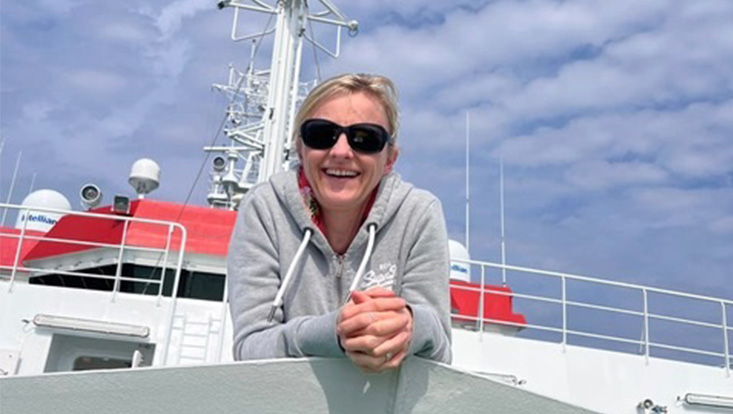Tremor and Tsunami off Samos Investigated
26 October 2021, by Stephanie Janssen

Photo: UHH/CEN/Jonas Preine
On October 30, 2020, the seafloor shook near the island of Samos, in the Aegean Sea. As a result, over 100 people were killed and more than 1,000 injured. The earthquake also triggered a Tsunami that impacted the coastal areas. In cooperation with the University of Athens, Universität Hamburg’s Institute of Geophysics undertook a ship-based expedition to investigate the causes and effects of the quake.
The aim was to identify the tectonic faults that caused the quake. “When it comes to risk assessments for a given region, the local makeup of the earth’s crust is an important factor – in other words, the type of tectonic regime behind a fault,” says Professor Christian Hübscher from the Center for Earth System Research and Sustainability (CEN), who planned the expedition. Using acoustic signals, a total of 450 kilometers of seismic profiles were acquired from on board the ship.
Jonas Preine from the CEN led the acquisition of seismic readings along the northern coasts of the islands Samos and Ikaria. “Initial analyses have shown that the region is home to several faults that were active in recent geological periods,” the geophysicist explains. “We’re very confident that we can contribute to the risk assessment for this hazardous zone.”
Taking seismic readings involves generating sound waves underwater. “In order to minimize the impact on marine mammals, we used a seismic source with extremely low sound emissions,” adds Preine. “In a collaboration with the Archipelagos Institute of Marine Conservation, the water’s surface was monitored by specially trained experts before each measurement. This meant we could be sure that there were no marine mammals in the vicinity of the ship. Only then did we transmit our acoustic signals.”
In addition, the Archipelagos Institute recently discovered previously unknown coral reefs between Samos and Ikaria, which are home to hundreds of species of marine life – so-called biodiversity hotspots. The geophysical data taken show that these hotspots are situated on elevated geological areas, like mountain ridges and seamounts, which are known to offer favorable conditions for the emergence of such ecosystems. “This is an exciting finding,” says Jonas Preine. “We are combining our geophysical data with biological data. The Greek institute now hopes to place the underwater area under protection as soon as possible. Maybe our findings can help them to do so.”


